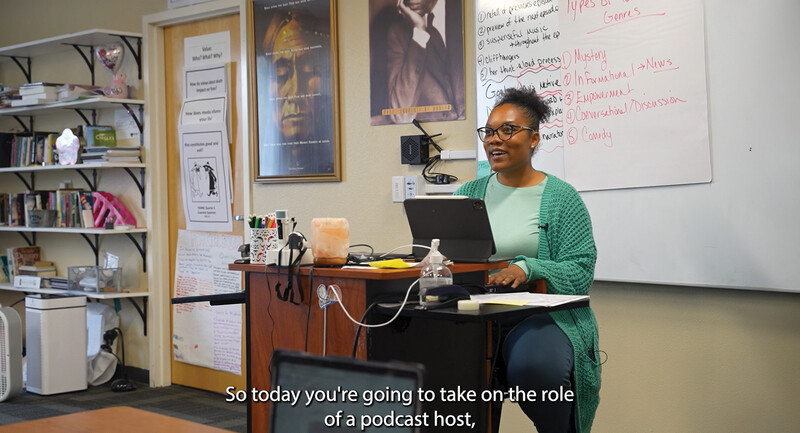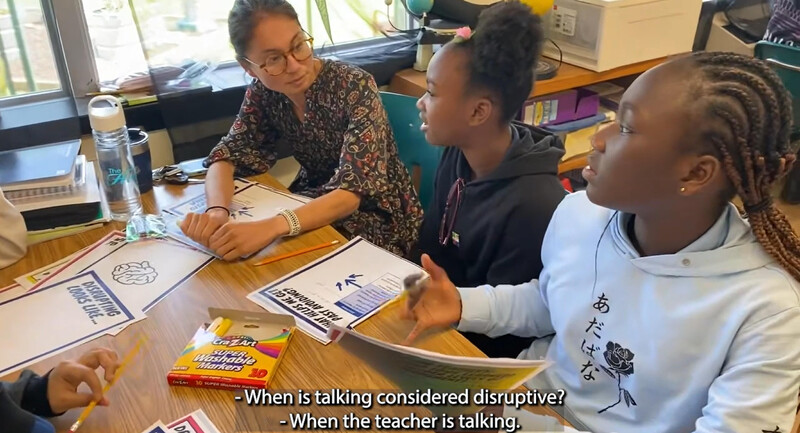Differentiation in middle and high school doesn’t need to involve designing eight different assignments, orchestrating complex group work, or turning the physical space into a kindergarten room. At its core, differentiation simply moves all students toward and beyond common and important learning goals. Sometimes, students share a route toward those goals. Other times, ongoing assessment compels teachers to plan different routes that vary by readiness, interest, or learning preferences.
Teachers have many “entry points” to planning and implementing lessons and tasks that anticipate and respond to students’ needs. Here are five:
Experiment with various groupings.
Differentiation refers to adjustments that teachers make in response to student performance—not the way students are grouped, per se. In a differentiated classroom, students work in a variety of configurations—from whole-group to individual to pairs to other small groups—for different reasons. Before giving students customized assignments that are aligned with the same goals, get them used to collaborating with others—even if it’s only for a few minutes to discuss a question or two. Consider having not one seating chart, but rather various seating arrangements that differ by your purpose for the day (e.g., a small-group discussion seating chart, a Socratic seminar seating chart). Another quick strategy is to have students quickly line up according to a preference (say, how much they like hot dogs, with haters at one end and lovers at the other) or characteristic (birth month and day). Put students into groups of your desired size, or “fold” the line and group students from there. Various groupings, from more random to more purposeful, build classroom community and set the stage for targeted differentiation.
Tweak an existing task or question.
Many teachers are understandably wary of differentiation because they believe it involves creating a laundry list of options. In truth, some of the best (and most efficient) differentiation strategies simply “tweak” or adjust aspects of an assignment to create versions that certain students find more accessible, more advanced, or more interesting. This adjustment might involve varying the problem, challenge, or situation at the heart of the task; the product that students generate from the task; or the topic that students explore to make sense of a bigger concept.
Pre-assess.
Pre-assessment finds out “where” students’ abilities lie relative to your goals for a unit before that unit begins. You aren’t looking for ways to differentiate as much as you are gaining a general sense of how students approach the content. Pre-assessments can be efficient and powerful, as long as you design them to gauge conceptual understanding and not just facts and skills. A simple science example follows:
- Imagine that you are designing an experiment to test [the effect of certain variables on plant growth]. Write a question that could guide your experiment.
- Create a chart to show three variables that you could test, how you could test them, and why you would test them.
- In this experiment you’ve designed, which variables are independent? Which variables are dependent? How do you know?
Such prompts can help the teacher spot significant misconceptions and skill gaps, as well as identify advanced thinking. The first few times you give a pre-assessment, focus less on discerning specific patterns among responses and more on how your findings might inform your general planning of all lessons in the unit.
For additional guidance in designing useful pre-assessments, see Hockett and Doubet’s (2012/2013) Educational Leadership article “Turning on the Lights: What Pre-Assessments Can Do.”
Check if they’re getting it
Like pre-assessment, this classroom-level formative assessment doesn’t need to be complicated. Many teachers use exit slips to pose several questions at the end of a lesson to gauge individual student understanding. For example, after a lab, a science teacher might ask:
- What was the independent variable in today’s experiment? How do you know?
- What was the dependent variable in today’s experiment? How do you know?
- What did you find out about the relationship between the independent and dependent variable?
Build on a familiar strategy.
Differentiation is not a set of strategies; rather, it provides a way to think about teaching and learning. This is good news, because secondary teachers can use many strategies—such as RAFT and Jigsaw—as vehicles for differentiation by keeping a few key principles in mind. No matter what, teachers should align all differentiated tasks with the same learning goals and with one another. If you feel like you need different rubrics or sets of criteria to evaluate each task, for example, there’s a good chance that your lesson plan is simply different, but not differentiated. All tasks should be engaging, appealing, require high levels of thought, and equal in terms of workload and time for completion.
Because secondary teachers often teach 100+ students a day with multiple preps, you may want to focus initial differentiation efforts—including the entry points listed above—on one class period or course. As the process becomes more familiar, you can begin incorporating it into additional classes.
Ultimately, any middle or high school teacher should focus less on “doing differentiation” and more on building their skills in planning learning experiences—differentiated and otherwise—that help students meet or progress beyond goals and standards.








